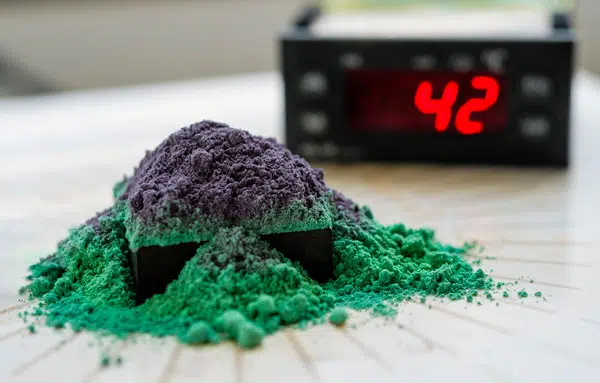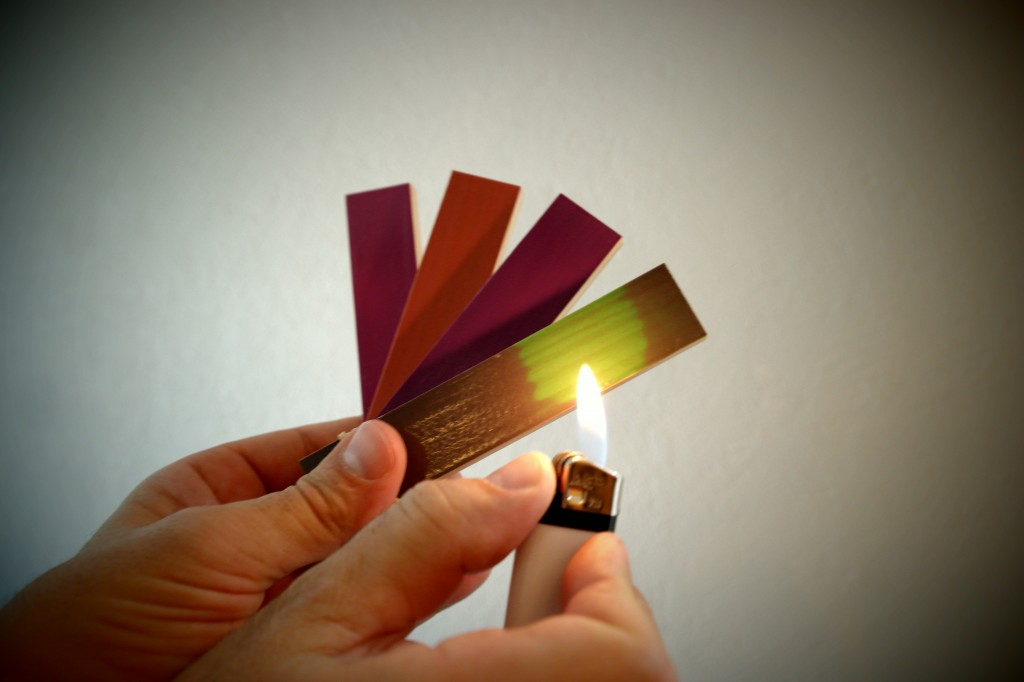What are the main families of thermochromic materials?
There are today 3 great families: organic, hybrids and inorganics thermochromic materials.
Thermochromic liquid crystals
It is the class of thermochromic organic products that has the particularity of changing state (phase transition) involving a series of transitions with intermediate physico-chemical properties between the crystal and the liquid (liquid crystals also called mesomorphic = from the Greek "of intermediate form").
During the thermochromic transformation, the orientation of the molecules is completely changed. The rise in temperature leads to an increase in thermal agitation and a growing disorder from a highly organized phase (crystals) to a totally disordered phase (liquid). In the crystalline state, the order is three-dimensional managed by long range interactions while in the liquid crystal state it is short range controlled by a few molecules. It is the orientation of these units in the material (short/long range interactions) that distinguishes the type of mesophase: nematic, smectic and cholesteric.
The main characteristic of these liquid crystals called "thermotropic" is to contain at least one aromatic entity and more or less branched linear chains, such as 4-n-pentylbenzenethio-4'-n-decyloxybenzoate, the discoidal molecule hexa-4-octyloxybenzoate of triphenylene, linear polymers, with side chains or combined.
Birefringence, elastic constants, viscosity or transition area are parameters of primary importance for choosing the right mesomorphic products. Depending on the molecular arrangement of the dyes, different colors of thermochromism are available in the material. It is generally a sequence that goes from black (or even red, orange) at high temperatures to blue (violet) at low temperatures.
Microencapsulated thermochromic pigments
This class of materials allows to reach thermochromic properties between -5 °C and 80 °C. They are microcapsules (leuco-dyes) made of three components: a colorant (color former), a weak acid (color developer) and a solvent.
- The dye is a organic molecule, which has the ability to change state (colored to colorless) with its chemical environment (pH of the medium). The most used derivatives are: spirolactones, fluorans, spiropyrans, or fulgides.
- The weak acid plays on the balance of the acid/basic form of the dye. It is a proton donor. This component is responsible for the reversible response of the thermochromic material, and is responsible for the color intensity of the final product. The standard color developer is bisphenol A.
- The solvent is the third element of the thermochromic microcapsule. It is generally a polar solvent such as an alcohol or an ester.
The presence of a microcapsule (leuco-capsule) is an undeniable advantage for maintaining the chemical integrity and reversibility of the encapsulated liquid and protecting it from the environment. However, this class of thermochromic pigments (dyes) is extremely sensitive to shear forces and temperatures above 250°C.


 At the scale of a hybrid or inorganic pigment, the thermochromism can be obtained from various physico-chemical mechanisms evolving with the temperature like the thermal expansion, the change of coordination, the modification of the crystalline field, the chemical decomposition.
At the scale of a hybrid or inorganic pigment, the thermochromism can be obtained from various physico-chemical mechanisms evolving with the temperature like the thermal expansion, the change of coordination, the modification of the crystalline field, the chemical decomposition.